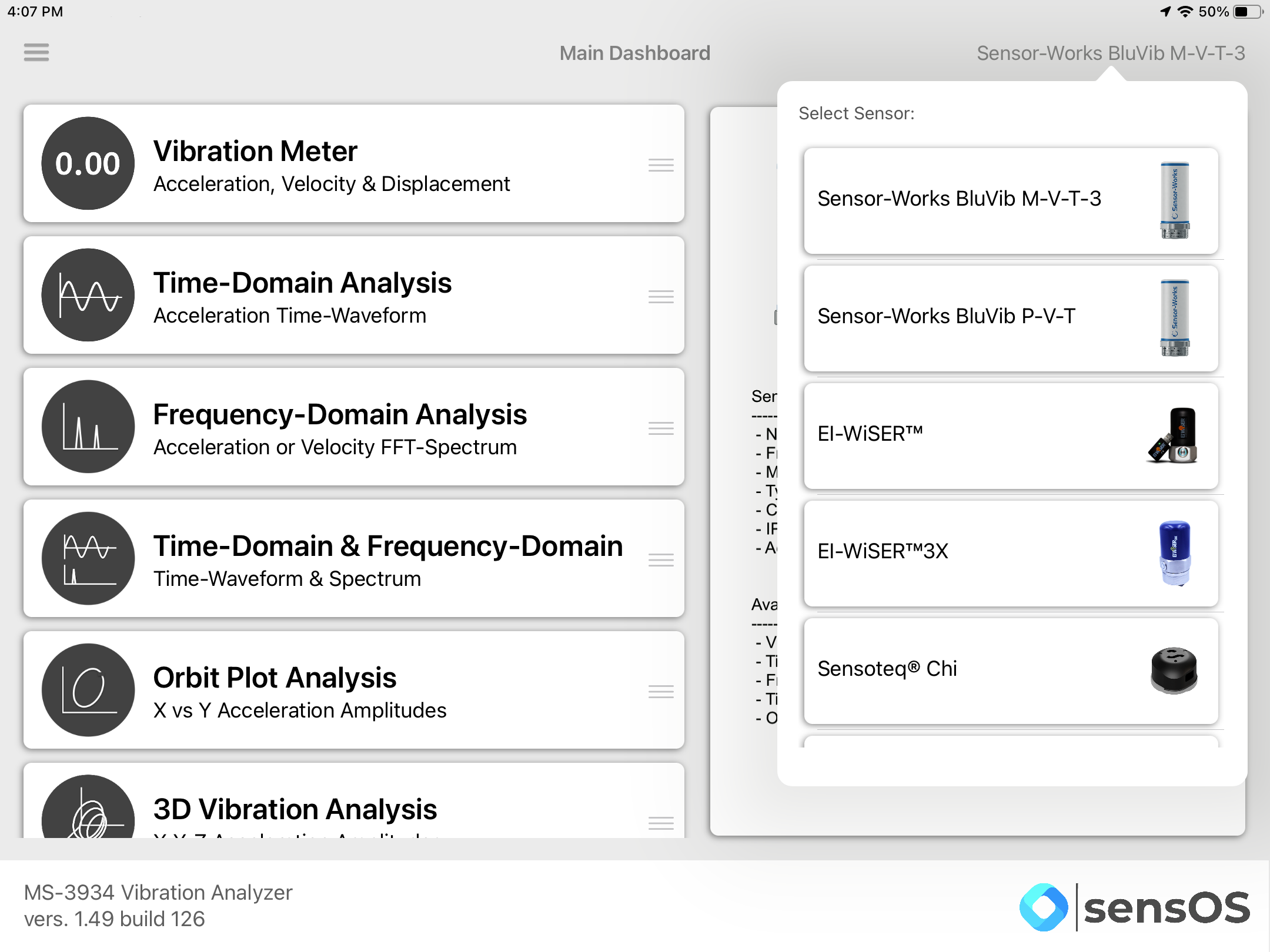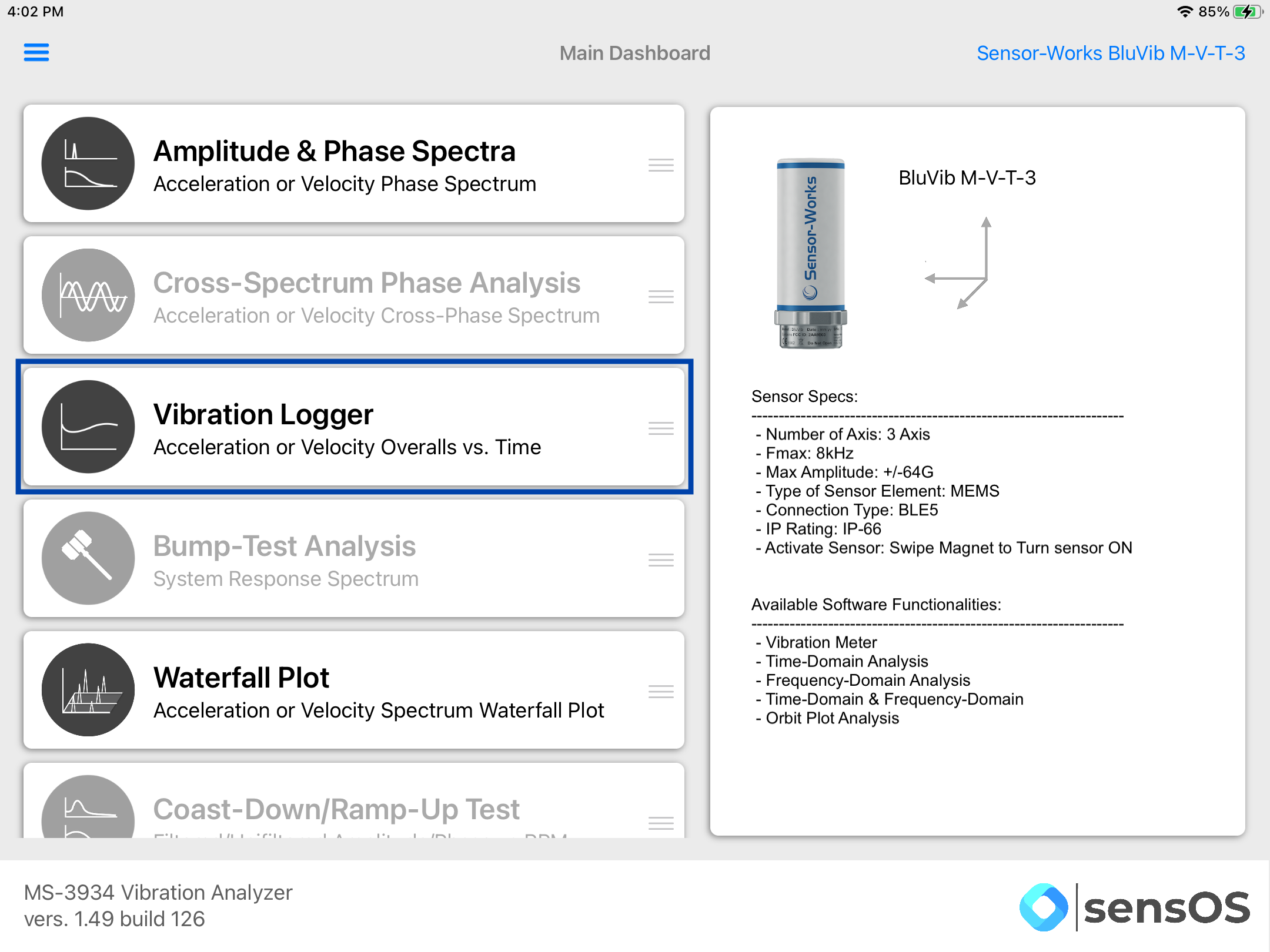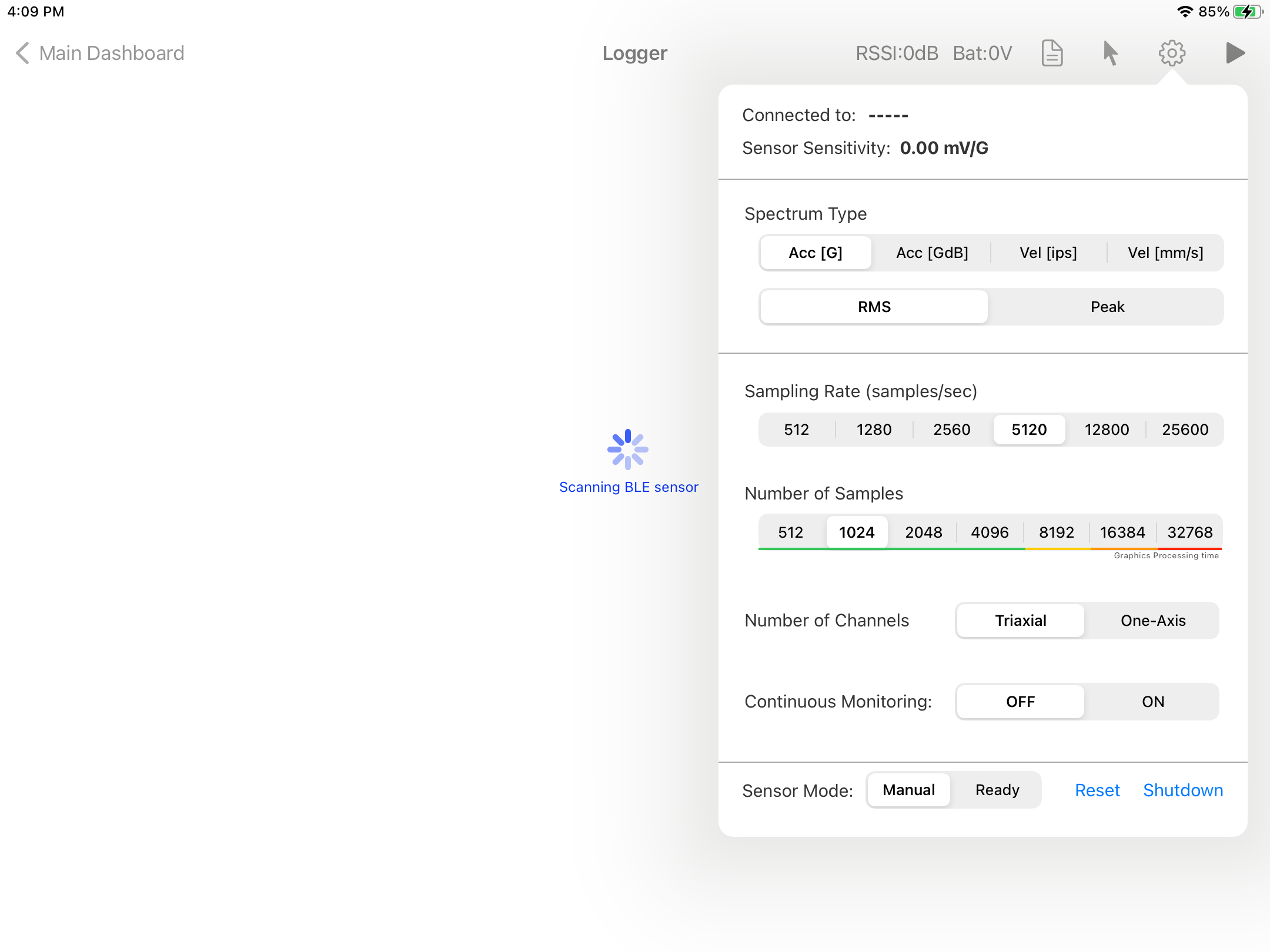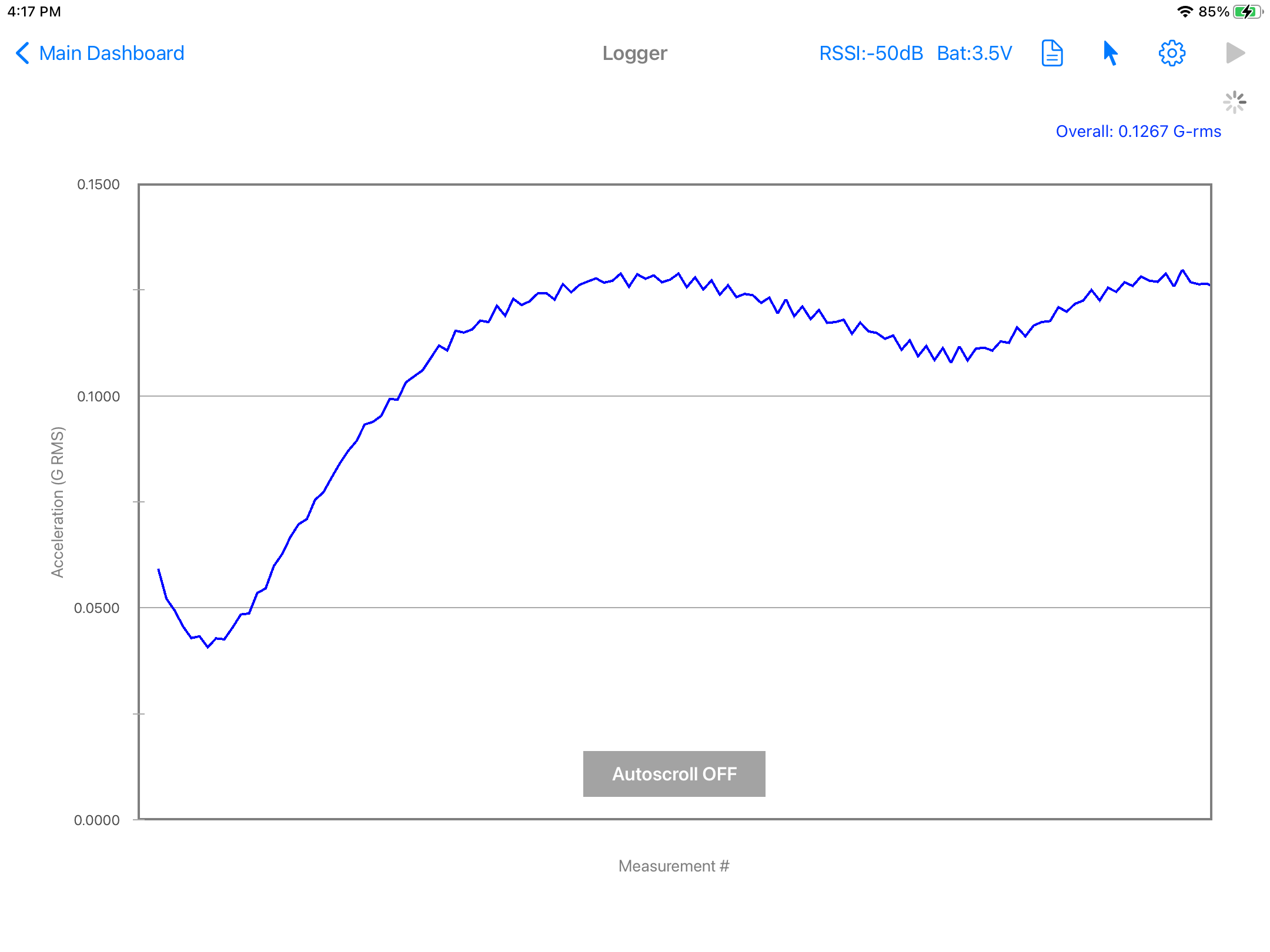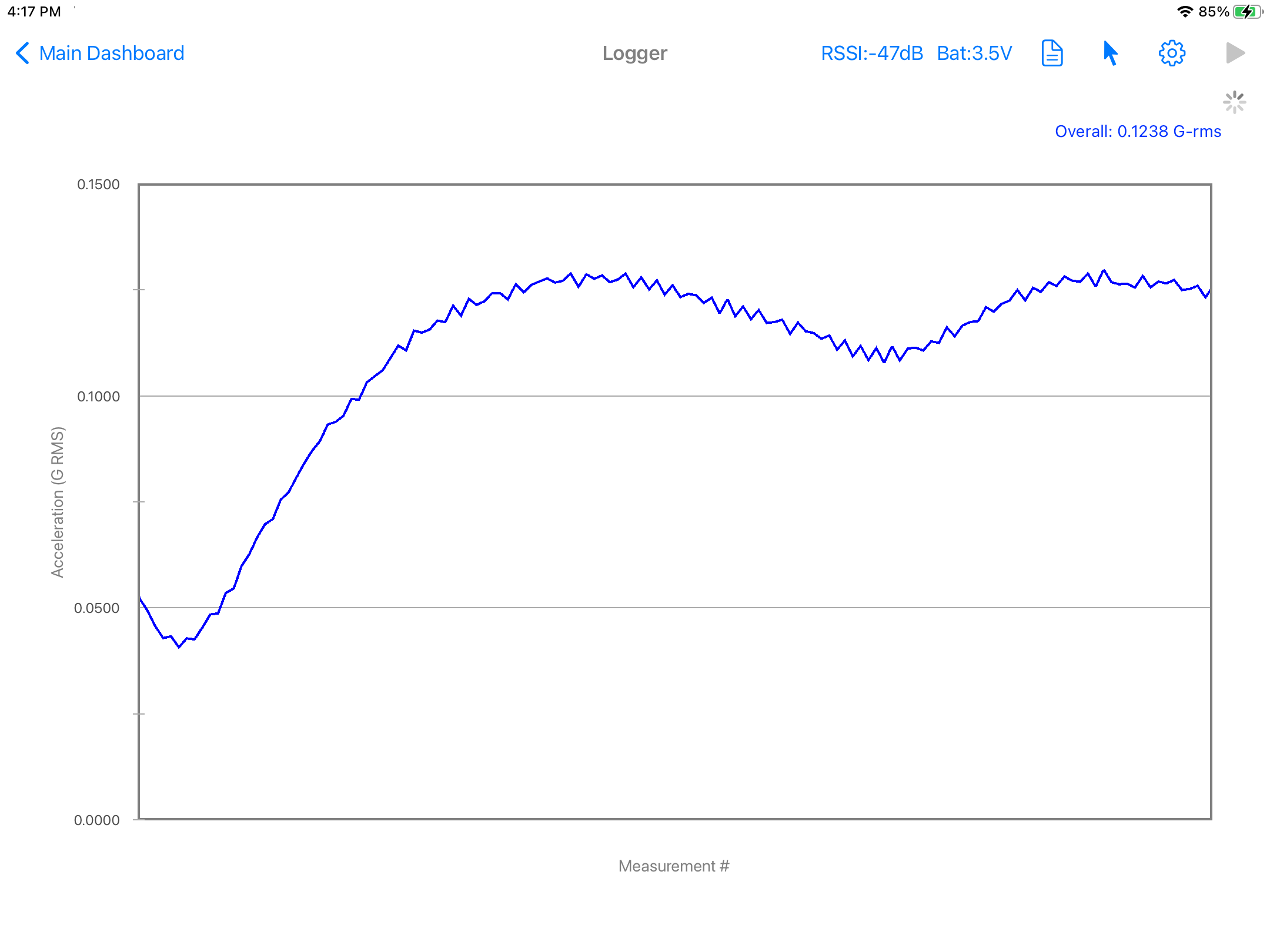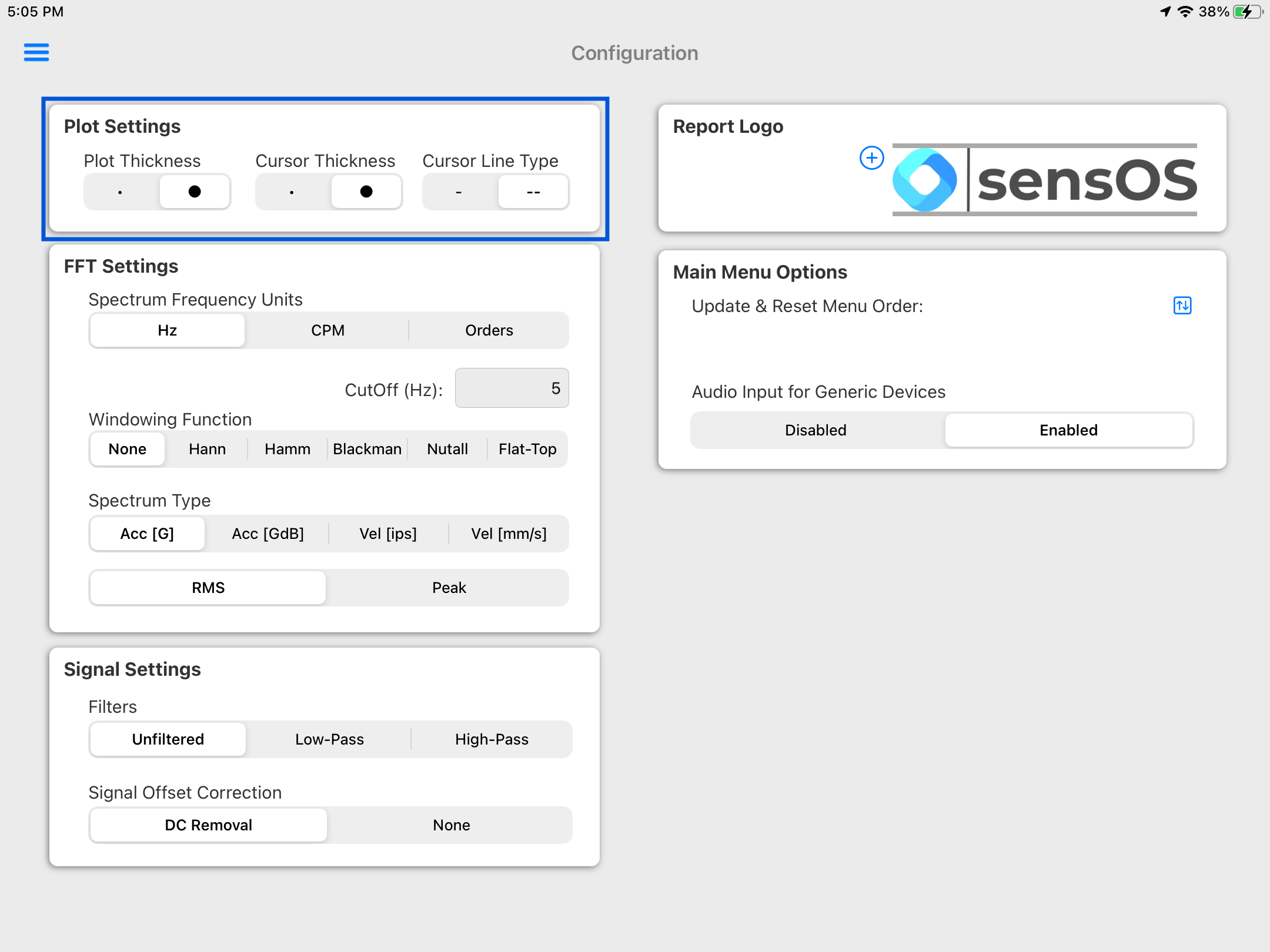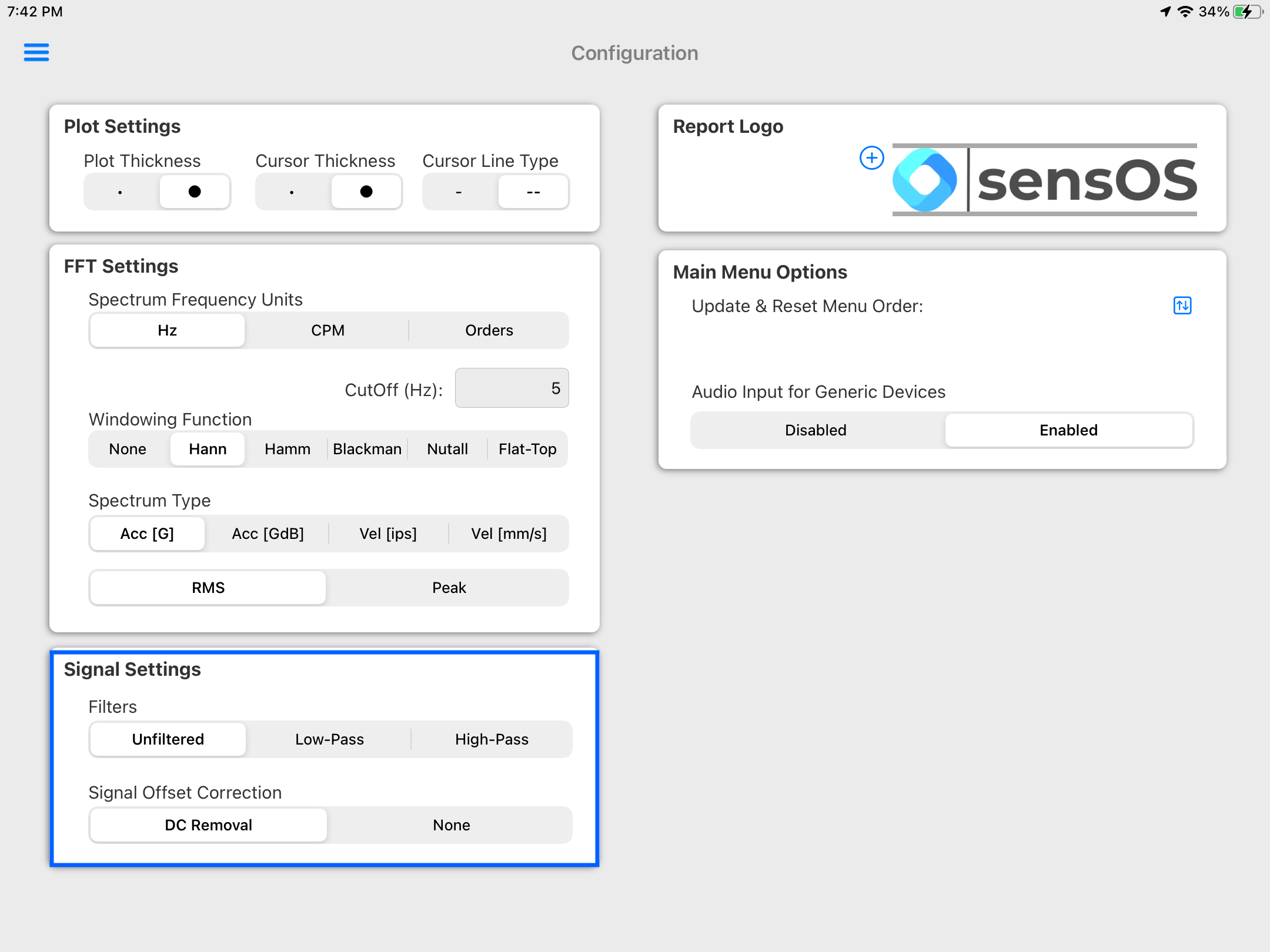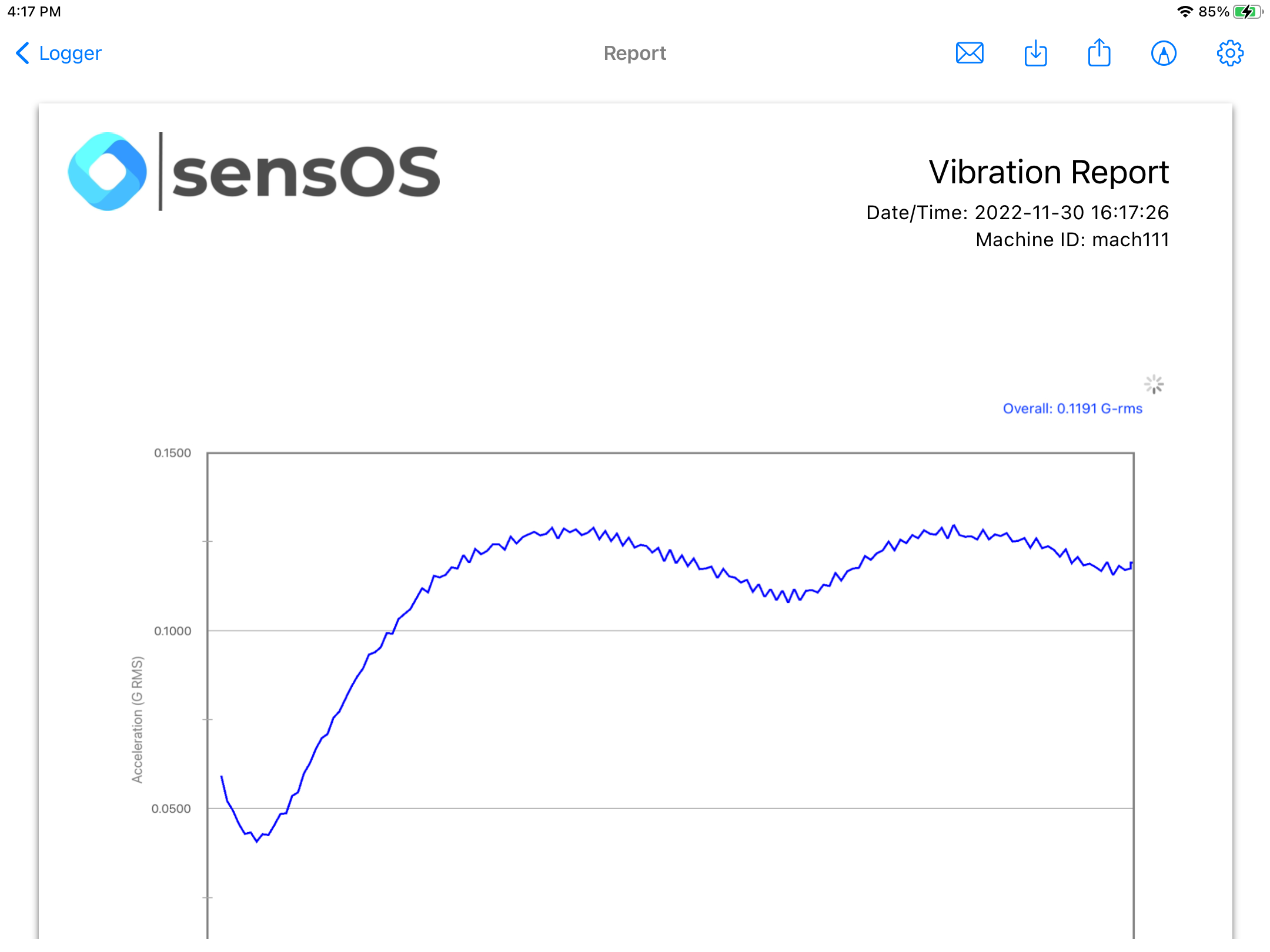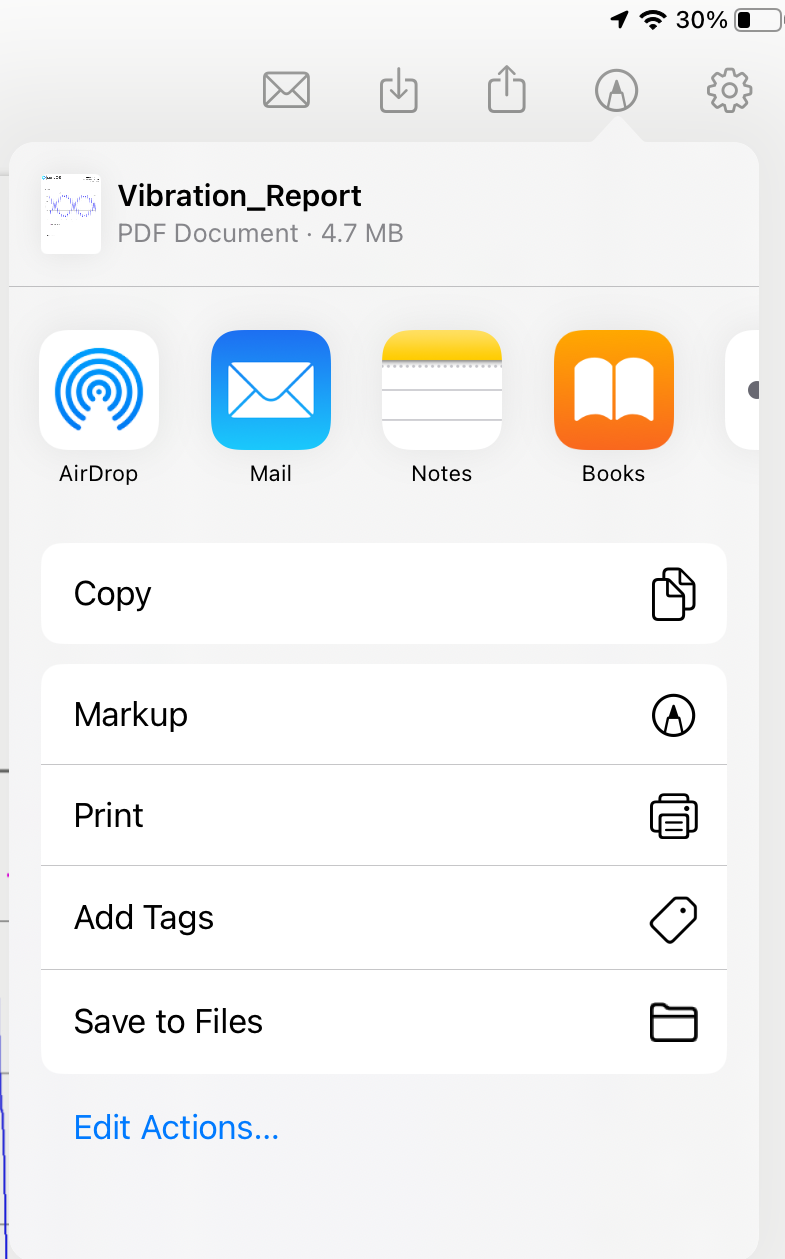Documentation
3934 Vibration Logger
MS-3934: Vibration Analysis Studio iPadOS® version
- Version: 1.49 (b.126)
- Author: D. Bukowitz
- Created: 29 Sep, 2021
- Update: 21 Nov, 2022
If you have any questions that are beyond the scope of this document, Please feel free to email via info@sens-os.com
Description
The vibration logger plots the vibration overall value (acceleration or velocity) in time. This can be used for several applications to track changes in the vibration overalls. The plot can be triggered manually or can be set to automatic take the readings.
Compatibility
This module is compatible with the following sensors:
- SensorWorks BluVib P-V-T (1 Axis)
- SensorWorks BluVib M-V-T-3 (3 Axis)
- Digiducer (1 Axis)
Main Menu
- Tap on the Sensor name button to open the list of available sensors, and select the sensor type from the list
- Select the Vibration Logger option from the list.
Note: The user can change the order of the functionalities in the list by dragging it from the right button on each cell
Vibration Logger
- The Start ► button will be disabled initially, until the sensor is connected. Select the sensor from the list of available wireless sensors, or connect the wired sensor to the tablet.
- The settings pop-up will allow the user to change the spectrum type to Acceleration in G's, Acceleration in dB and Velocity in ips or mm/s. The sampling rate and the number of samples can also be changed here, options will depend on the available sampling rate and number of samples of each sensor. Other options, such as windowing, filtering and cut-off value can be modified in the general Configuration view. See Configuration for more details. Setting the Continuous Monitoring to ON will automatically collect data, in the OFF position, the user will need to press the start button to take each reading.
- Place the sensor on the asset and press the start ► button, each overall reading will be added to the plot. To zoom the plot use both fingers to pinch in and out, to pan use one finger and swipe left or right. Pinching with two fingers all the way in will activate the Autoscroll functionality.
- A full pdf report can be generated, saved or sent by clicking on the report button, see more info in: Generating a pdf Report.
Configuration
- From the Main menu, click the top left menu button to open the left drawer with more options. Select 'Configuration' from the left menu
- Select the Plot Thickness, Cursor Thickness and/or Cursor Line Type from the Plot Settings selectors.
- The Signal Settings will affect the raw data directly. The DC-Removal is ON by default by can be turned OFF here. Also a general Low-Pass or High_pass filter can be applied to the signal.
- The FFT Settings will be set as defaults for all readings. Here the user can change the spectrum frequency units to Hz, CPM or Orders. A Cut-Off value can be added to remove low frequency values. Also windowing can be selected for the spectrum, the available options are: None, Hanning, Hamming, Blackman, Nutall and Flat-Top. The spectrum type and RMS/Pk values can be set as defaults here, but can also be changed in the settings pop-up of the spectrum.
Note: This selection will affect all reading's raw data for all modules
Report
- The report view contains several options in the top bar menu: 1:Send by Email, 2:Save pdf locally, 3:Upload Report to the Cloud bucket, 4:Markup and 5:Report Configuration
- The markup tool allows the user to copy the report to the clipboard, send it by Airdrop or any other messaging app, email it, print it or saved it to Files. The markup tool will open the standard tool to paint on the pdf report.
- The Report Configuration pop-up allows the user to enter the Report Title, Machine ID and Notes to be added to the report. Here the user can also select a logo for the report and include a picture of the asset that will be added in a new page in the report. The report file name be default is the actual date and time, but the user can change it to the title name of the report or to both, the title name and date.
Changelog
See what's new added, changed, fixed, improved or updated in the latest versions.
Version 1.49 b.126 (21 Nov, 2022)
- Optimized Optimized for iPadOS 16
Version 1.25 b.88 (30 Nov, 2021)
- Added Added support for Sensor-Works BLE Sensors
Version 1.15 b.75 (29 Sep, 2021)
Initial Release
